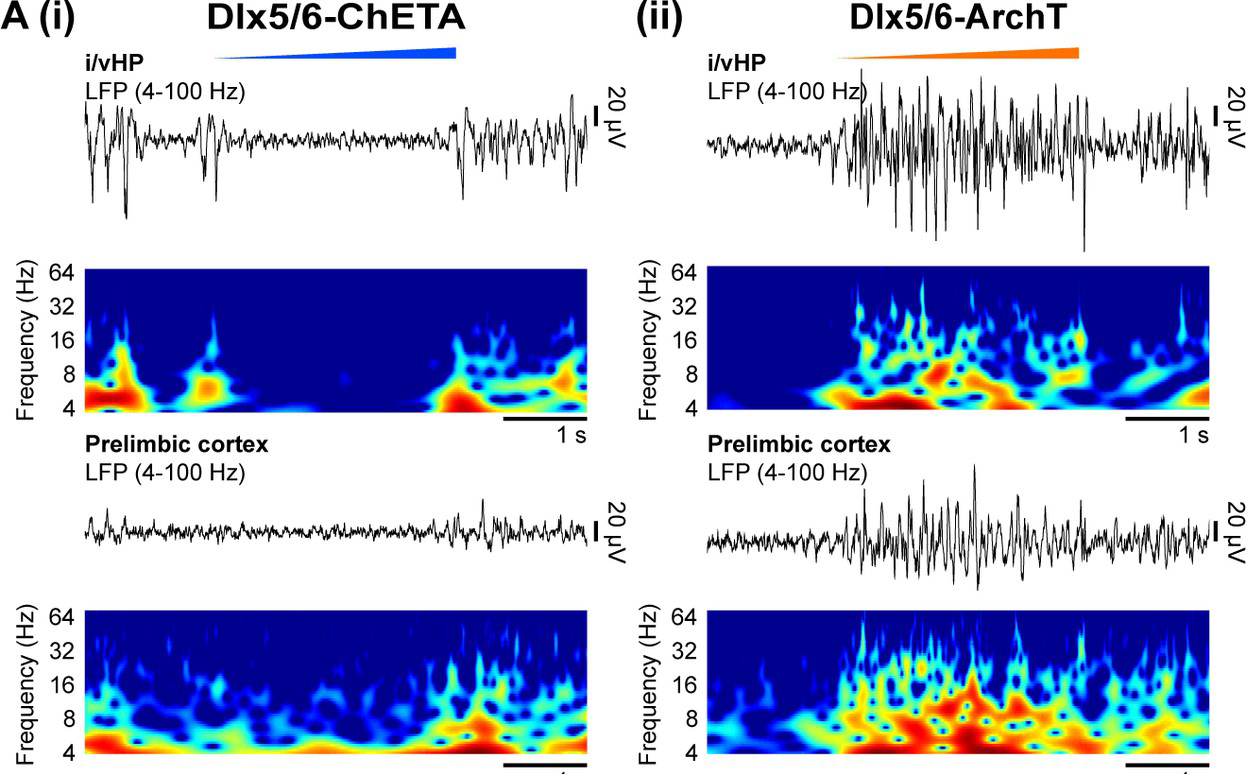
We compare the dorsal and ventral/medial portions of the developing hippocampus (mice of 8-10 days of age) and show that:
1) oscillations and sharp waves are stronger in the dorsal part
2) despite being weaker, oscillations and sharp waves in the medial/ventral part exert a stronger effect on the PFC (sharp waves induces massive spiking)
3) optically activating CA1 pyramidal neurons in the medial/ventral portion (and not the dorsal) at 8Hz (and not 4 or 16Hz) drives the PFC
4) inhibiting/exciting the medial/ventral portion of the HP via excitation/inhibition of interneurons inhibits/excites the PFC